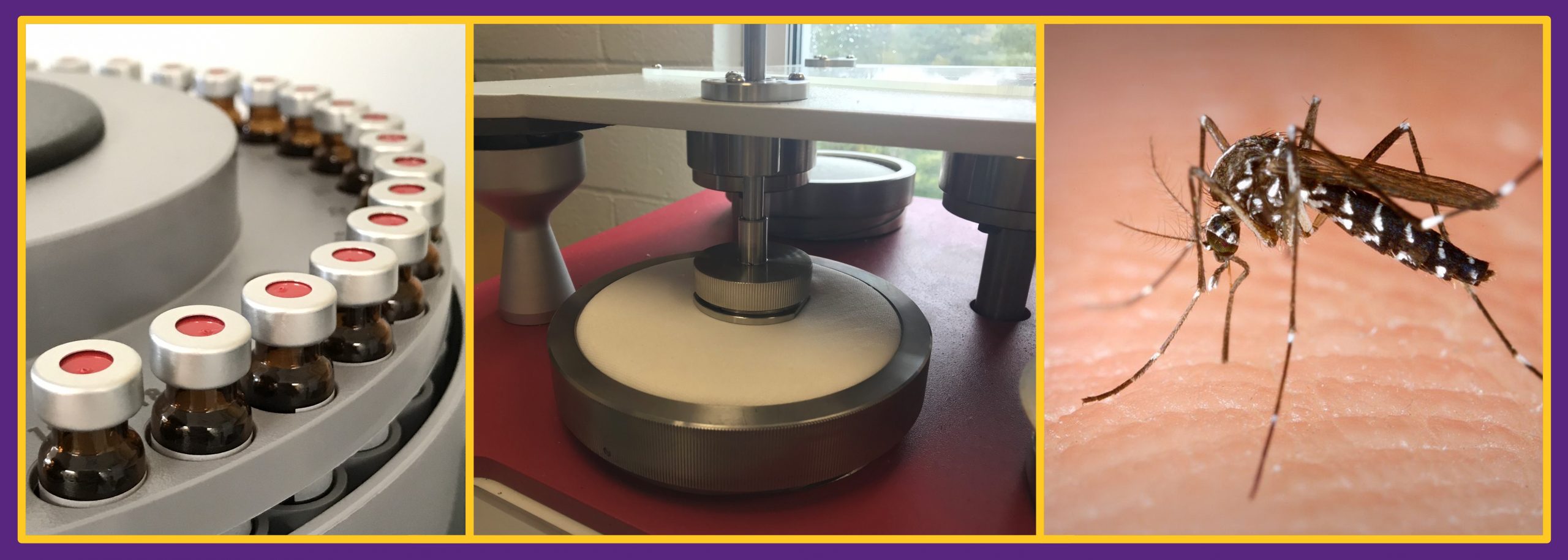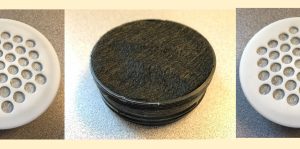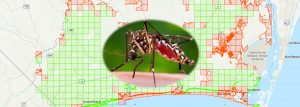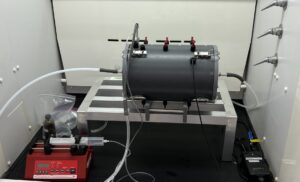Vang A, White AV, Balanay JG, Tutor-Marcom R and Richards SL (2022). Evaluation of Surface versus Total Permethrin Content in Permethrin-Treated Clothing: Implications for Protection Against Mosquitoes. Pathogens and Global Health (epub ahead of print). doi:10.1080/20477724.2022.2028377
Permethrin is a synthetic pyrethroid insecticide used to treat uniforms (e.g., military, foresters) and other clothing to protect people against pests such as mosquitoes and ticks. Pests contacting the surface of permethrin-treated clothing (PTC) are repelled and/or killed, depending on the dose and duration of exposure. Hence, it is important to assess the amount of permethrin on the surface of clothing for repellency and/or control. Fabric swatches prepared using two commercially available permethrin treatments (Insect Shield® & Sawyer Repellant) and one laboratory created treatment (4 g permethrin/L) were tested. A Martindale Abrasion and Pilling Tester (MAPT) and gas chromatography were used to assess surface permethrin content (SPC) and total permethrin content (TPC). Sawyer PTC had the highest SPC (mean ± standard error) (32.68 ± 14.55 µg/g), followed by Insect Shield® (23.35 ± 2.71 µg/g) and lab-created 4 g/L permethrin (8.7 ± 0.78 µg/g). SPC (after 1000 rubs on MAPT) for Insect Shield®, Sawyer, and 4g/L permethrin groups was significantly lower than TPC (P=0.011, P<0.001, and P=0.001, respectively). The SPC/TPC relationship varied widely between different permethrin treatment methods evaluated here and practical implications for this are discussed. Mosquito repellency tests indicate that Insect Shield®, Sawyer, and lab-created (4g/L) permethrin-treated fabrics showed a significantly higher repellency rate than control (untreated) fabrics (P=0.001, P<0.0001, P<0.0001, respectively). While Insect Shield® had the highest repellency rate against susceptible (53%) and exposed (48%) mosquitoes, differences between groups were not significant. Repellency rates found here indicate SPC plus other factors (e.g., treatment method) may contribute to mosquito repellency and this should be considered in risk assessments for protection against pests.
*Adam Vang is a recent graduate of the ECU MS Environmental Health Program.




